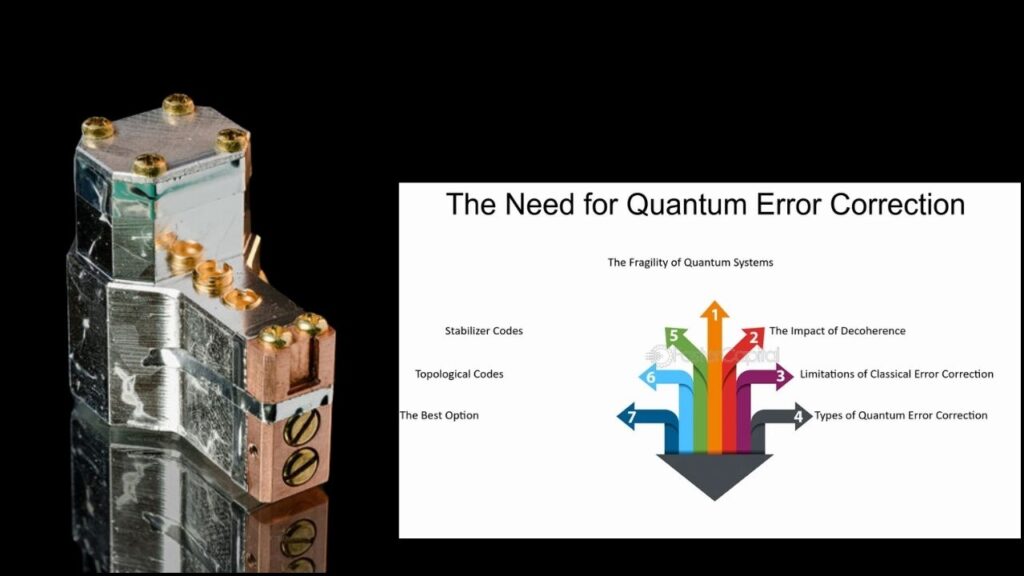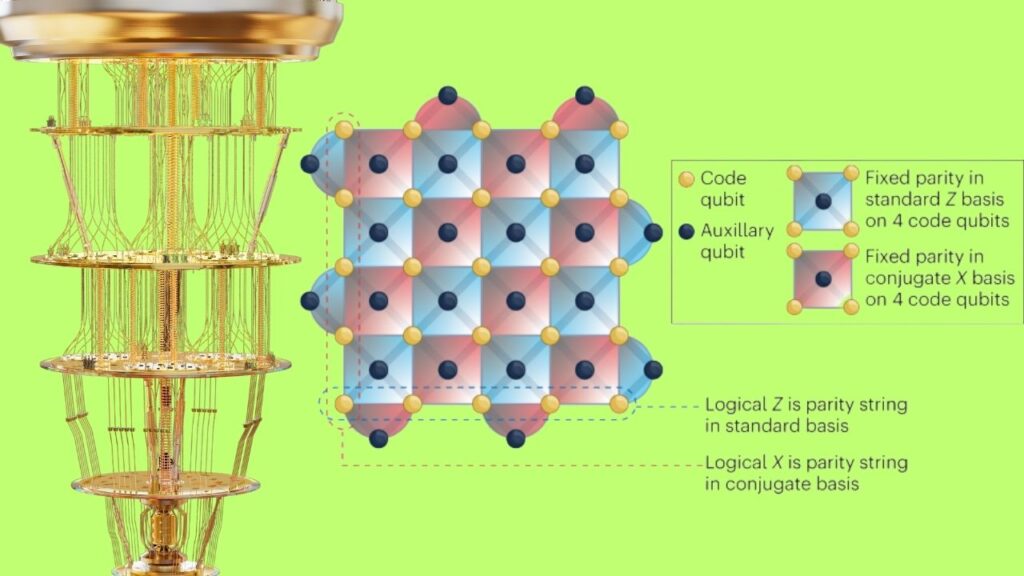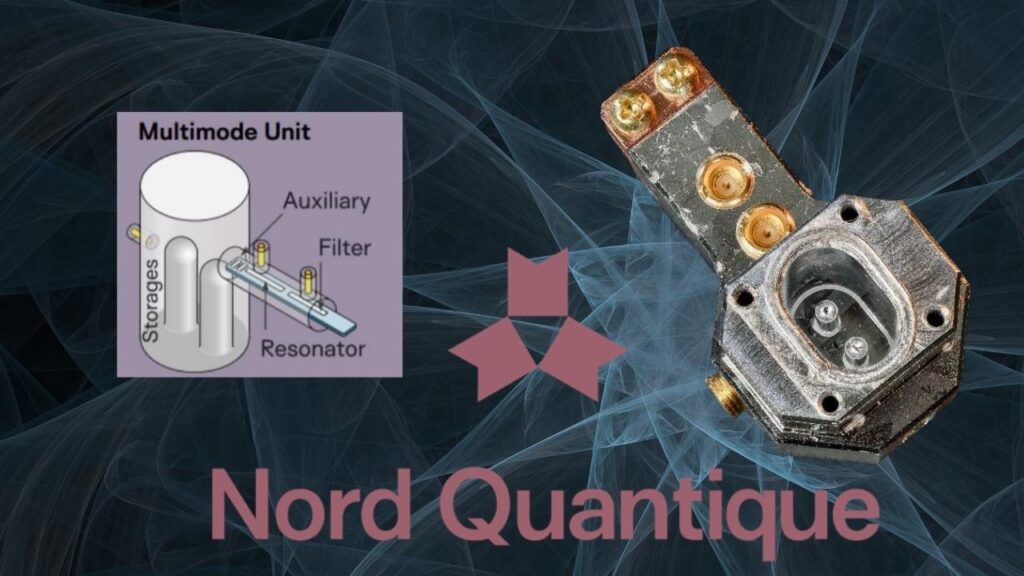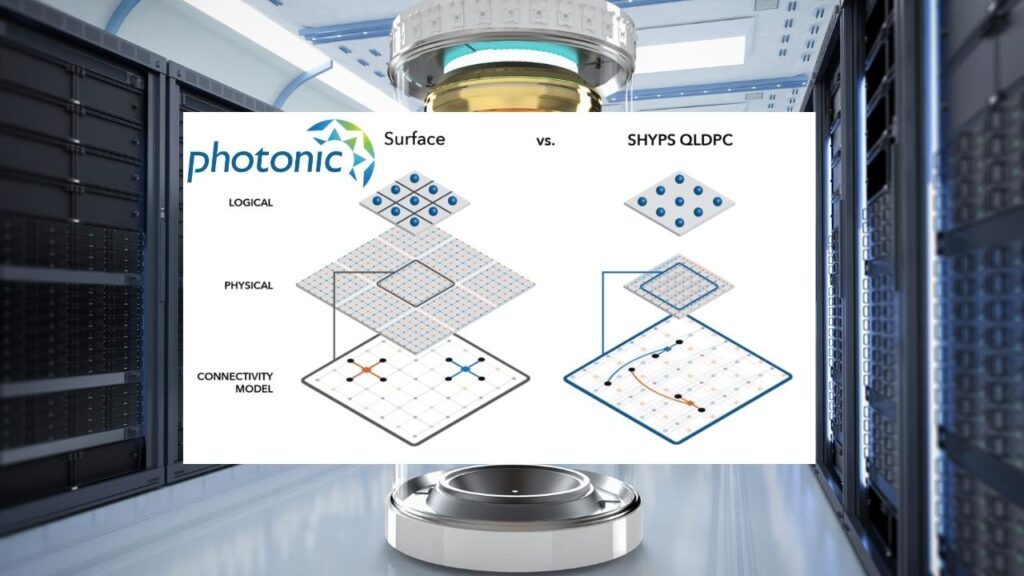Canada Advances Quantum Error Correction Techniques for Scalable Quantum Computing: Quantum error correction is one of the most vital challenges in building practical quantum computers, and Canada is making remarkable progress in this field in 2025. Leading Canadian companies such as Nord Quantique, Photonic Inc., and Xanadu Quantum Technologies are pioneering innovative techniques that significantly reduce the error rates and physical resource requirements of quantum systems. These developments are crucial to unlocking the full potential of quantum computing for real-world applications.

Quantum computing promises to revolutionize industries by performing complex calculations exponentially faster than classical computers. However, qubits—the fundamental units of quantum information—are highly sensitive to noise and disturbances, causing errors that can quickly degrade computation. Effective quantum error correction (QEC) methods are essential for maintaining qubit integrity and achieving fault-tolerant quantum computing.
Canada’s quantum research and industry are spearheading the global effort to solve one of the toughest challenges in quantum computing: quantum error correction. By developing advanced techniques such as bosonic multimode codes, SHYPS codes, and GKP qubits, Canadian innovators are reducing the resource demands and increasing the stability of quantum processors.
Supported by strong government funding, world-class academic institutions, and visionary startups, Canada is setting the stage for scalable, fault-tolerant quantum computers that can transform industries ranging from pharmaceuticals to cybersecurity. For professionals and businesses, this means exciting opportunities in quantum technology development and deployment are rapidly approaching.
Table of Contents
Understanding Quantum Error Correction and Its Importance

Unlike classical bits that are either 0 or 1, qubits leverage superposition and entanglement, enabling them to represent multiple states simultaneously. This capability allows quantum computers to tackle complex problems in cryptography, chemistry, and optimization.
However, qubits are also fragile. Factors such as thermal fluctuations, electromagnetic interference, and material defects can cause qubits to lose coherence or change state unexpectedly. This phenomenon is known as quantum decoherence, which leads to errors in computation.
Why Is Quantum Error Correction Difficult?
In classical computing, redundancy—such as triple modular redundancy—helps detect and correct errors by copying bits multiple times. In quantum systems, this strategy cannot be directly applied because of the no-cloning theorem, which forbids copying an unknown quantum state.
Instead, QEC encodes logical qubits into entangled states of many physical qubits, allowing the system to detect and correct errors without measuring the qubit states directly, which would collapse their quantum information.
The main challenge lies in the huge overhead: correcting errors with existing methods can require thousands or even millions of physical qubits to encode just a few logical qubits, making large-scale quantum computers impractical with current technology.
Canadian Breakthroughs in Quantum Error Correction
Canada’s quantum ecosystem is rapidly evolving, driven by a combination of government funding, academic excellence, and innovative startups. Recent advances focus on reducing the overhead and improving the efficiency of QEC schemes.
Nord Quantique’s Multimode Bosonic Code

Nord Quantique, based in Sherbrooke, Quebec, is leading with a unique approach using bosonic codes to encode quantum information in the electromagnetic modes of a superconducting microwave cavity.
- How It Works: Unlike conventional qubit-based QEC, bosonic codes use the infinite-dimensional Hilbert space of a single cavity mode. This allows storing and protecting quantum information more compactly.
- Tesseract Code: Nord’s Tesseract code encodes logical qubits across multiple frequency modes within one cavity resonator. It can detect and correct multiple error types, including bit flips, phase flips, and leakage, with fewer physical components.
- Recent Achievements: In early 2025, Nord Quantique demonstrated 32 rounds of quantum error correction with only 12.6% data discarded per cycle through post-selection techniques—a record performance indicating strong noise resilience.
This result drastically lowers the required physical qubits per logical qubit and energy consumption, making quantum computers more scalable and commercially viable.
Photonic Inc.’s SHYPS Codes: Scalable Quantum Low-Density Parity-Check Codes

Photonic Inc., headquartered in Vancouver, is developing SHYPS (Scalable Hypergraph Product Stabilizer) codes, a new family of quantum low-density parity-check (QLDPC) codes that aim to combine efficient error correction with quantum computation.
- Advantages over Surface Codes: Traditional surface codes are effective but require huge qubit overhead and complex lattice layouts. SHYPS codes maintain high fault tolerance but need about 20 times fewer physical qubits, dramatically reducing hardware complexity.
- Simultaneous Computation and Correction: SHYPS codes allow error correction operations and logical quantum gates to be applied simultaneously, improving computation speed and reducing latency.
- Practical Impact: These codes enable quantum processors that are more compact, cost-effective, and energy-efficient, key factors for scaling up quantum computers.
Photonic Inc.’s breakthroughs are already attracting attention from global quantum hardware developers and government R&D initiatives.
Xanadu Quantum Technologies’ Implementation of GKP Qubits
Xanadu, a Toronto-based leader in photonic quantum computing, utilizes Gottesman-Kitaev-Preskill (GKP) qubits, which encode quantum information in continuous-variable photonic modes using grid-like lattice states.
- GKP Qubits Explained: GKP encoding protects qubits by spreading information over a grid in phase space, making them naturally resilient to small displacement errors.
- Advantages for Photonic Architecture: GKP qubits simplify the implementation of quantum gates and reduce the frequency of active error correction cycles.
- Recent Progress: Xanadu has demonstrated improvements in fault-tolerant operations using GKP qubits combined with other bosonic codes, positioning photonic systems as promising candidates for scalable quantum computing.
These advances reduce hardware complexity and enable integration with existing photonic technologies such as silicon photonics.
Canada’s National Quantum Strategy and Ecosystem
Canada’s remarkable progress is supported by a cohesive National Quantum Strategy and strong partnerships among universities, government agencies, and private enterprises.
- Government Funding: Agencies like Natural Sciences and Engineering Research Council (NSERC) and Innovation, Science and Economic Development Canada (ISED) provide strategic funding to projects focused on quantum hardware, algorithms, and software development.
- Leading Research Institutions:
- University of Waterloo’s Institute for Quantum Computing (IQC) is globally recognized for quantum information science.
- Institut Quantique at Université de Sherbrooke works closely with startups like Nord Quantique on hardware innovations.
- Perimeter Institute for Theoretical Physics supports foundational quantum theory research.
- Industry-Government Collaboration: Canadian quantum startups benefit from tax incentives, research grants, and collaborative programs linking academia and industry to accelerate commercialization.
Practical Implications for Professionals and Industry
For Quantum Engineers and Researchers
- Reduced Qubit Overhead: New codes like SHYPS and bosonic multimode codes drastically cut physical qubit needs, easing fabrication and control challenges.
- More Stable Qubits: GKP and bosonic codes improve qubit coherence times and error resilience, critical for building reliable processors.
- Simplified Architectures: Integrating error correction with computation reduces circuit complexity and improves gate fidelities.
For Startups and Investors
- Lower Costs and Faster Time-to-Market: Less complex hardware translates to reduced manufacturing costs and quicker prototyping.
- Cloud Quantum Computing: Efficient error correction enables more stable, scalable quantum cloud services accessible to a wider user base.
- Attractive Investment Opportunities: Canada’s innovation ecosystem and government support make quantum startups promising candidates for investment.
For Students and Newcomers
- Growing Job Market: Quantum error correction expertise is in high demand globally, with opportunities in hardware, algorithms, and software.
- Learning Resources: Canadian universities offer dedicated programs and research opportunities in quantum computing and QEC.
- Career Growth: Skills in QEC open doors to high-impact roles in academia, industry R&D, and government labs.
India Launches First Full-Stack Quantum Computer Indus: A Major Leap in Quantum Technology
Quantum Computing Milestone Achieved, Immediately Challenged by Supercomputer
South East Queensland Positioned as Global Hub for Quantum Computing Revolution
FAQs About Canada Advances Quantum Error Correction Techniques for Scalable Quantum Computing
Q1. What is quantum error correction and why is it important?
Quantum error correction protects quantum information from noise and errors, ensuring reliable computation in fragile qubit systems.
Q2. Why can’t classical error correction methods be used in quantum computers?
Because of the no-cloning theorem, quantum states cannot be copied directly, requiring more sophisticated encoding and correction methods.
Q3. What are bosonic codes and why are they useful?
Bosonic codes encode qubits in quantum states of light or microwave cavities, allowing compact and efficient error correction with fewer physical components.
Q4. How do SHYPS codes differ from other QEC codes?
SHYPS codes are quantum low-density parity-check codes that reduce qubit overhead and enable simultaneous computation and error correction.
Q5. Where can I learn more about Canada’s quantum programs?
Visit NSERC’s Quantum Program for official information on funding and research initiatives.



















